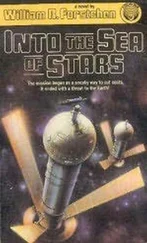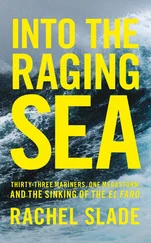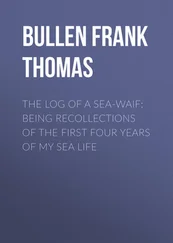1 ...7 8 9 11 12 13 ...18 After sailing for forty years, Jack Jackson had met many guys like LaShawn Rivera and plenty of other unlicensed seamen who were much rougher around the edges. Trapped on a ship way out at sea, things could get ugly, sometimes violent, and you couldn’t just call the cops.
“You wouldn’t believe the fucking shit that goes on on these ships, ya know?” he said to Jeremie. “I’ve always had the bad luck of being around these crazy eccentrics. I mean, I’ve been with some real sickos, man. I mean, some real fucked-up people, man.”
Jack’s assessment was that during this tour, at least, they were sailing with some good people.
Jeremie looked out at the sweltering sea. Dazzling sunlight burned up the hazy dawn. He was happy to hear he wasn’t a sicko.
At 9:30 a.m., Davidson walked in. “What’s this silly thing telling us?” he asked, gesturing to the NHC weather alerts coming in through the SAT-C printer.
Jeremie joined him at the machine and studied the new data. “Showing the wind warning and all that stuff. We’re going into it.”
“We’re going into the storm,” Davidson said turning to face down the horizon. “And I wouldn’t have it any other way.”
For Davidson, handling a massive cargo ship was a true test of a man’s mettle. Courage was a job requirement for taking the top post in the American merchant marine. You had to be ready to fight drunken seamen, confront recalcitrant officers, and wrangle more speed out of your chief engineer. And there was always the threat of the sea itself. That said, Davidson hadn’t yet seen much weather on El Faro . Erika was the first real storm he’d been through on that ship. And thanks to Charlie Baird, he hadn’t witnessed how El Faro handled in a full-blown tropical cyclone. Their route during Erika through the Old Bahama Channel took them south of the islands. They had forty-knot winds on their port side but were in the lee so the seas stayed calm enough that the crew had been able to work as they steamed through.
“Ship’s solid,” he told Jeremie authoritatively. “There was no shortage of swell running during that storm.”
“This ship is solid,” Jeremie agreed. “The hull itself is fine. The plant no problem. But it’s just all the associated bits and pieces, all the shit that shakes and breaks loose that’s the problem. And where the water goes,” he added prophetically.
“Just gotta keep the speed up,” said Davidson, perturbed that his third mate didn’t simply agree with him the way a third mate should. “And who knows? Maybe this low will just stall a little bit, just enough for us to duck underneath.”
Throughout the voyage, Davidson never referred to Joaquin as a hurricane. He called it a “low,” or a “storm,” or a “system,” continually downplaying Joaquin’s power, either to reassure himself or to firm his officers’ resolve.
Davidson then reminisced aloud about storms past. It was the mariner’s way of showing off experience. And balls. He’d earned his stripes: “The worst storm I was ever in was when we were crossing the Atlantic. Horrendous seas. Horrendous. We went up, then down, then down further. You’d roll a little bit into the trough, then you’d rise up a crest and come crashing down and all your cargo would break loose. The wheels on the vehicles aboard moved so much that the lashings loosened up. We were in that shit for two days. The engineers would be cleaning the fuel strainers every three hours.”
On a steam ship, keeping the fuel lines clear is critical—they’re the main arteries to the boiler. And they can get blocked. Heavy fuel oil, the kind used for older cargo ships, is thick, viscous, and dirty, rife with impurities and solids. Just like a bottle of wine that’s been stored for a while, sediment can settle at the bottom of the holding tanks and accumulate there. Sudden movement will stir up that gunk, which then clogs the lines that feed the boilers. To minimize this problem, the fuel lines are equipped with strainers—wire mesh trays that look like fryer baskets—and under normal operation, these have to be cleaned out daily.
In rough weather, with the ship tossing and turning, engineers might find themselves cleaning those strainers with greater frequency. One former officer told me that several years ago, when El Faro was in thirty-foot seas, an engineer had to clean out the strainers every three minutes. It’s arduous work, not as simple as dumping fryer oil. The whole fuel strainer assembly needs to be taken apart to access these strainers, then put back together.
Davidson recalled that during the Atlantic storm, the ship’s engineers had to slow the turbines to protect their machinery. “We could only do six knots,” he told Jeremie. “The winds were 102 knots, force 12.” (Force 12 is the maximum level on the traditional Beaufort scale, an empirical measure of wind speed as it relates to sea conditions. The scale was widely adopted in the nineteenth century as a way to standardize mariners’ observations at sea. Force 12 refers to winds greater than 73 miles per hour and greater than forty-six-foot waves. On land, force 12 would cause “devastation,” according to the scale. At sea, the air would be thick with sea spray and foam, and visibility would be nil.)
“It was like that for a solid twenty-four to thirty-six hours,” Davidson continued, “I shit you not. This for a couple of days. It was bad. It was bad. We had a gust of wind registered at 102 knots. It was the roughest storm I had ever been in.”
Jeremie wasn’t the kind of man to one-up Davidson with his own sea stories. Ships are supposed to go around storms, not through them, though sometimes they get caught in something and have to fight their way out. But thinking about Davidson’s story made him consider El Faro , a ship he knew well. She didn’t handle storms gracefully. He’d seen it with his own eyes.
“The scariest thing I ever saw was that on this ship you’re a lot closer to the water, not far above the waterline,” he said. “At night we’d get into a trough and see the white line of the waves breaking right next to us, all the way up here on the bridge.”
Davidson was too captivated by his own tale to hear Jeremie. Just thinking back on that Atlantic storm got his adrenaline going. That was real seafaring there. A wild ride. He continued spinning his yarn: “We had a rogue wave on every seventh or eighth wave in a period. On the bridge, all hell broke loose. Before we went through that thing, I would’ve said no way could the knobs of a radio to get blown off. Well, it happened.”
Hell, maybe they’d get those kinds of seas this time. But maybe not. “I think we’ll duck down south enough and we’ll speed up,” Davidson said, just a touch disappointed.
At 10:30, another NHC weather forecast came through NAVTEX on the bridge. Jack tore the sheet off the printer. “It’s moving away fast,” he said, scanning the coordinates.
“No,” said Jeremie looking at it more closely. “It’s not moving away, not yet.”
He walked over to the weather chart they’d been working on and plotted out the latest forecast. They were heading southeast, skirting the islands on the Atlantic side, and Joaquin was heading southwest, right for them.
“We’re on a collision course with it.”
At the time, the winds were only blowing 55 knots at the hurricane’s center.
When Davidson left the bridge, Jack’s mind wandered to the seafarers of long ago in their sailing ships, crossing the Atlantic, encountering a hurricane for the first time. “I wonder what the first Spanish sailors, those that survived, thought when the eye passed right over them,” he said. “They’re thinking, It’s over .”
Читать дальше












